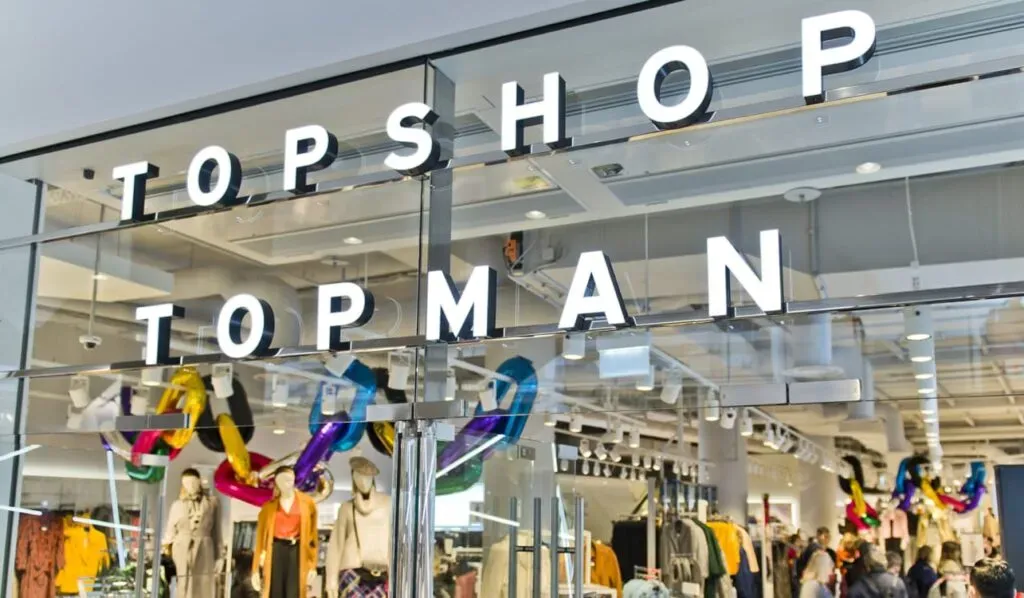Topshop Return is shaping up to be one of the most anticipated events in the world of high street fashion. With its first catwalk show in over seven years scheduled to kick off London Fashion Week, excitement is building around this beloved brand’s comeback. As shoppers reminisce about the vibrant, stylish days of Topshop, this revival aims to breathe new life into the iconic high street label known for its trend-setting designs. Acquired by Asos, Topshop is not just paying homage to its nostalgic roots but is also gearing up to capture the hearts of a new generation of fashion enthusiasts. Can the brand once considered the heart of the high street truly surpass mere nostalgia and reclaim its place on the fashion catwalk?
The resurgence of this once-iconic retailer hints at a significant shift in the landscape of contemporary fashion. Topshop’s newfound direction, under its parent company Asos, reflects a commitment to delivering not just stylish offerings but also ethical choices in apparel. As the fashion industry embraces diverse aesthetics, the focus on inclusive, well-designed pieces resonates with consumers seeking authenticity. The return of this storied brand to the forefront of high street apparel may pave the way for a broader discussion on the evolution of retail fashion and the importance of blending heritage with modern values. With its catwalk debut approaching, many are eager to see how this transformation unfolds.
The Anticipated Topshop Return: A New Era for High Street Fashion
Topshop’s long-awaited return to the catwalk marks a significant moment in the resurgence of high street fashion. After a seven-year hiatus from the runway, fashion enthusiasts are eager to witness how the brand can reinvent itself in the competitive retail landscape. The involvement of iconic faces like Cara Delevingne adds a layer of excitement, promising to reignite interest from both loyal fans and a new generation. As consumers yearn for the nostalgia of their shopping experiences at Oxford Circus, Topshop aims to leverage this emotional connection while also establishing a fresh identity within the fashion industry.
High street fashion is evolving rapidly, and Topshop’s comeback comes at a pivotal time when brands must adapt to changing consumer preferences. With the growing trend toward sustainable and ethical fashion, Topshop is positioning itself to not only attract millennials and Gen Z but also appeal to the values these demographics hold dear. By balancing nostalgia with contemporary fashion needs, Topshop hopes to reclaim its space as a go-to destination, extending beyond mere sentimentality into a realm of relevant style and ethics.
Topshop’s Catwalk Show: A Blend of Nostalgia and Modernity
As Topshop prepares to unveil its first catwalk show in years, the fashion community is buzzing with anticipation. This event aims to capture the spirit of the brand’s heyday while showcasing innovative designs that cater to current trends. The convergence of past and present not only highlights Topshop’s rich heritage but also demonstrates its commitment to evolving alongside the fashion landscape. By revisiting classic designs and revamping them for a modern audience, Topshop can connect the dots between nostalgic fashion and the current demand for stylish, affordable pieces.
The return to the catwalk is more than just a fashion event; it symbolizes a larger narrative of resilience and reinvention. Topshop’s history is steeped in memorable collaborations and pushes towards daring styles that defined a generation. Today, as the brand seeks to emerge from the shadows of its past, it faces the challenge of remaining relevant amidst fast-fashion competitors like Asos and other retailers who have overtaken the market. By presenting a collection that values creativity and heritage, Topshop can spark new interest while honoring its legacy.
Topshop’s Collaboration Strategy: Building a New Fashion Narrative
Strategic collaborations have always been a hallmark of Topshop’s success, and as it relaunches, these partnerships will be crucial. By teaming up with emerging designers and influencers, Topshop can tap into diverse creativity that resonates with contemporary shoppers. This approach not only revitalizes the brand’s image but also reinforces its connection to both nostalgic fashion and the modern catwalk. With a focus on quality and unique aesthetics, these collaborations can help Topshop stand out in a crowded market, ensuring its offerings are not just trendy but also meaningful.
Moreover, incorporating the voices of younger designers can reflect the diverse aspirations of today’s consumers. Fashion is no longer solely dictated by established names; instead, the industry is now conversing with new waves of talent who bring fresh ideas to the table. By investing in such collaborations, Topshop not only champions innovation but also cultivates a community of style that encourages customers to engage with the brand on a deeper level, beyond mere shopping—positioning itself as a cultural touchpoint in the evolving world of fashion.
Is Topshop Ready for a Comeback? Navigating Challenges Ahead
While excitement surrounds Topshop’s anticipated return, key challenges lie ahead. As scenarios unfold in the fashion realm, the question arises—can Topshop truly connect with a generation that now has a multitude of choices at their fingertips? Nostalgia alone may not suffice to entrench the brand in today’s fashion landscape, especially as retailers evolve to meet consumer demands for ethical, sustainable, and stylish clothing. Topshop’s challenge will be to balance its heritage with innovation, ensuring it doesn’t merely cater to memories but also to the present and future shopping preferences.
Understanding consumer behavior has never been more vital. Today’s shoppers seek not only fashion but also a value system that aligns with their lifestyle. The challenge for Topshop will be to establish a clear stance in the realm of sustainability and ethical production practices—ensuring that its comeback resonates with shoppers who, in their formative years, felt an emotional connection to the brand. By addressing the complexities of fast fashion, Topshop can carve out a niche for itself, emerging as a fashion leader that respects both heritage and progress.
The Role of Social Media in Topshop’s Revival Strategy
In today’s digitized world, social media plays an integral role in shaping fashion trends and consumer interactions. For Topshop’s revival, leveraging platforms like Instagram and TikTok can facilitate a renewed connection with consumers who are searching for relatable and authentic brands. Engaging influencers, utilizing trendy hashtags, and showcasing behind-the-scenes footage of the catwalk show can amplify brand visibility and captivate the younger audience’s attention. The goal will be to create a narrative that not only sells clothes but fosters a lifestyle that resonates across generations.
As part of its marketing strategy, Topshop must consider how to effectively engage with viewers online. The excitement generated through social platforms can drive foot traffic to their physical stores, bridging the gap between online shopping and the tactile experience of high street retail. Through interactive campaigns that incorporate user-generated content, Topshop can empower its customers to be part of its fashion story, encouraging them to express their personal style while fostering a sense of community around the brand.
The Importance of Affordable Fashion in Topshop’s Business Model
In the realm of high street fashion, affordability remains a pivotal aspect of Topshop’s appeal. The brand has always prided itself on delivering once-coveted styles that are accessible to a broad demographic. By strategically pricing those pieces, especially when compared to competitors like Shein, Topshop can regain its market share while still maintaining quality. With the managing director of Asos signaling a commitment to affordable yet fashionable clothing, this foundational principle will guide Topshop’s product offerings as it strives to attract both nostalgic shoppers and new customers.
Navigating the delicate balance between maintaining affordability and ensuring quality will be key. As consumers become more conscientious about fast fashion’s impact, Topshop must communicate its commitment to responsible production practices. This transparency in their pricing strategy will build trust among consumers, who often seek brands that reflect their values. By aligning stylishness with sustainability and ethics, Topshop can re-emerge as a beloved name on the high street, embodying a fashion-forward yet affordable ethos.
Topshop’s Market Position: Competing with the Giants
The competitive landscape of fashion retail has evolved dramatically, and Topshop’s return necessitates a thorough understanding of its market positioning. With giants like Zara and H&M continuing to dominate, Topshop must differentiate itself through unique offerings and a clear brand message. Crafting an identity that harks back to its innovative roots while embracing what modern consumers desire can help the brand reclaim its status in high street fashion. Effective marketing strategies will be crucial here, aiming not just to attract attention but to convert it into sustainable sales.
With strong consumer loyalty driven by nostalgia, Topshop stands at an advantage, but it cannot solely rely on its past to forge a successful path forward. The brand’s strategy must include engaging with current fashion trends while ensuring it reflects the aspirations of its target audience. As competition intensifies, Topshop has the opportunity to carve out a distinct niche in the market that blends excellent customer experience with values that resonate, paving the way for a robust and meaningful future.
The Reimagining of a Fashion Giant: What Lies Ahead for Topshop
As Topshop embarks on this new chapter, the journey ahead will be pivotal for its legacy. The reimagined brand must look towards an inclusive vision that caters to diverse consumers, embedding itself in the cultural conversations of today’s world. Beyond just clothing, Topshop has the potential to create experiences that connect deeply with shoppers, reflecting the values and aspirations they hold as central to their identities. The transition from nostalgia to relevance will be foundational in shaping the brand’s narrative going forward.
It will also be essential for Topshop to continually innovate, ensuring that it stays one step ahead of fast fashion’s rapid cycles. With a focus on quality, sustainability, and inclusivity, the brand can inspire loyalty among both nostalgic fans and a new customer base. By reflecting on its rich heritage while remaining attuned to contemporary sensibilities, Topshop is positioned to reclaim its role as a stalwart in high street fashion, with the promise of a future that celebrates both style and substance.
Frequently Asked Questions
What is Topshop Return and how does it relate to high street fashion?
Topshop Return refers to the brand’s comeback to the high street after a hiatus, aiming to reestablish its presence as a leading name in fashion. With its nostalgic roots and plans for new collections, Topshop is positioned to attract both long-time fans and a new generation of shoppers interested in stylish, affordable options.
How can I participate in the Topshop Return catwalk show?
The Topshop Return catwalk show is open to the public, offering a unique opportunity to witness the brand’s revival firsthand. Keep an eye on announcements regarding ticket availability and event details, as participation will likely attract many fashion enthusiasts.
What makes Topshop’s comeback different from other high street fashion brands?
Topshop’s comeback is distinguished by its rich heritage and significant cultural impact on the high street fashion scene. The brand aims to balance nostalgic elements with contemporary trends, appealing to both millennials and Gen Z shoppers seeking meaningful fashion.
What is the significance of Topshop under Asos fashion ownership?
Under Asos’s ownership, Topshop is being revitalized with a focus on high-quality, well-designed clothing that reflects contemporary values. The integration into Asos’s ‘fashion with integrity’ strategy emphasizes ethical sourcing and sustainable production, setting it apart in the retail landscape.
What should I expect from Topshop’s new collections post-return?
Expect Topshop’s new collections to blend nostalgic fashion with modern aesthetics, featuring iconic pieces reminiscent of its heyday alongside innovative styles. The brand aims to cater to the tastes of diverse shoppers while maintaining affordability and quality.
Will Topshop’s return to the high street include standalone stores?
Yes, Topshop plans to expand its presence with standalone stores as part of its return strategy. This move is crucial for reconnecting with customers and providing the immersive shopping experience that the brand is known for.
How can I stay updated on Topshop Return events and collections?
To stay informed about Topshop Return events and new collections, follow the brand’s social media channels, sign up for newsletters, and check the official Topshop website regularly for updates and announcements.
Is Topshop’s return focused on millennial or Gen Z fashion trends?
Topshop’s return aims to cater to both millennials and Gen Z, embracing the nostalgia for its past while also appealing to the current fashion sensibilities of younger consumers. This dual focus is essential for reestablishing relevance in the ever-evolving fashion landscape.
What is the pricing strategy for Topshop Return items?
Topshop’s pricing strategy for its return emphasizes affordability while ensuring quality. Expect competitive prices, such as around £50 for jeans and about £100 for dresses, fitting within the high street fashion market without compromising ethical values.
How does Topshop’s return impact the perception of high street fashion?
Topshop’s return represents a pivotal moment in high street fashion, revitalizing interest in physical retail spaces and offering a nostalgic yet fresh experience. The brand’s comeback could inspire other retailers to rethink their strategies in a post-pandemic shopping environment.
| Key Point | Details |
|---|---|
| Topshop’s Return | Topshop is set to hold its first catwalk show in seven years during London Fashion Week, signaling a significant return. |
| Ownership and Changes | Acquired by Asos in 2021 after the closure of its flagship Oxford Circus store due to administration. |
| Public Sentiment | There is strong nostalgia among consumers for Topshop, particularly from millennials and older Gen Z. |
| Future Plans | Plans to re-establish standalone stores and avoid fast fashion, aiming for well-designed affordable clothing. |
| Creative Legacy | Past successes attributed to creative collaborations and a focus on customer expectations. |
Summary
Topshop Return marks a significant moment in the retail landscape as the beloved brand aims to reclaim its status through nostalgia and a renewed focus on quality. While the emotional connection with former shoppers is strong, the challenge lies in attracting a new generation while remaining relevant in today’s diverse market.



